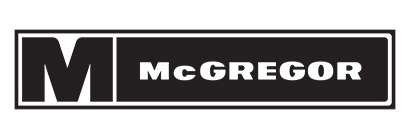Perspectives on business transition planning
2024August 2024
By Dr. David Kohl
Professor Emeritus, Virginia Tech

A major trend in American agriculture will be the acceleration of estate and transition planning. The transfer of wealth will also be a high priority item for the general population as $68 trillion of assets and equity will transfer between 2025 to 2040. With many elderly in the demographics, the agriculture industry will be the first segment to experience this transfer of approximately $4 trillion dollars of wealth.
One of the major challenges is that businesses and individuals will tend to procrastinate when confronted with the challenge of transition. Businesses that complete my Business IQ scorecard find that transition and estate planning is often a weak point. Surprisingly, it is the lowest score for successful businesses when ranked by return on assets.
Perspectives
Let’s make it clear that there is a difference between estate planning and transition planning. Estate planning is the transfer of assets and equity of the business, whereas transition planning often entails the transfer of management and operations to the next generation or remaining stakeholders, which could be family or nonfamily members. Twenty one percent of American farmers and ranchers have no next generation to whom they can pass the business or legacy.
Process
Recently, I lost an older brother, who was a farmer, which brought the whole process of estate and transition planning front and center. In my brother’s case, his wife passed some 20 years earlier, resulting in a proactive stance in addressing many of the challenges.
The process of transition and estate planning is a marathon, not a sprint. Usually, it will take a series of meetings over a period of time with key stakeholders of the business and help from professionals such as a lawyer. A facilitator or business coach can be very useful in moving the process forward. This third-party facilitator needs to be someone outside the family. Time should be allotted to build trust with this facilitator so that complicated issues and challenges can be addressed. The role of the facilitator is to develop agendas, maintain minutes, and ask challenging questions that require individuals to critically think about the consequences. They are often very good listeners and observant of nonverbal communications to maintain the flow of the process. Be forewarned that if the individuals involved in the transition process do not threaten to fire that individual at least once, then they are probably not flushing out all of the issues and challenges. Get ready, because sometimes the situation will feel very uncomfortable!
Cost and control
A barrier in completing the transition or estate plan is the overall cost. Yes, it may require 1% of the asset or equity value to complete and update the plan. Consider the funds spent as an investment in the preservation of equity, assets, and transfer of management in a timely manner for a smooth business transition.
One obstacle for business owners and entrepreneurs that have built the business and wealth is giving up management control of the business. There is an old saying that to maintain control, one must give up control in a more objective, less emotional process. I will often bluntly tell people if you do not give up control and follow the process, the ultimate winner will be the tax man and some high-priced professionals including lawyers and accountants!
Jump-starting the process
Frustration often occurs when stakeholders indicate that some individuals hold the process up, particularly parents, grandparents, aunts, and uncles. Success in this challenge has come from delegating the task of interviewing their elders to the grandchildren to develop a history of the business. This history can be in writing, audio recording, or video. Through this process, commitment is often created among generations to ensure the business’ legacy continues on.
Another technique is to require each stakeholder to write down the vision and goals of the business. Short-term goals are usually less than one year, and longer-term goals have a time frame of three to five years. In a recent instance, the parents thought their children did not have any interest in the business. After completing this exercise, they were surprised to find out that they really wanted to return.
Other tips and perspectives
A successful business transition requires a profitable business measured not by tax returns, but by accrual adjusted income statements and a thorough financial analysis. Tax returns often are not an accurate picture of profitability as a result of manipulating revenues, expenses, and capital purchases to reduce income taxes.
Start simple and move towards complexity. Make sure that you have the basic documents in place, such as wills and final directives, and have these documents in an accessible, known location. Once these basics are in place, then move on to more complex parts of the process.
Finally, not all children or heirs of the estate need to be treated equally. They need to be treated fairly and equitably. The individuals involved in the business often take over a risky asset that was used to build wealth and earnings. In some cases, these heirs will become encumbered by debt or other financial obligations. Cash or liquid assets such as life insurance proceeds have very little risk and a high degree of flexibility.
Keep these final thoughts on structuring an inheritance in mind:
- If an individual is given $100,000, on average, they will spend it in 17 months and have little to show for it.
- “Fast money” builds big egos and is quick to be spent. “Slow money” received over time builds character.
Dr. David Kohl is an academic hall-of-famer in the College of Agriculture and Life Sciences at Virginia Tech in Blacksburg, Va. Dr. Kohl is a sought-after educator of lenders, producers and stakeholders with his keen insight into the agriculture industry gained through extensive travel, research and involvement in ag businesses. This content was provided by AgWest Farm Credit.












